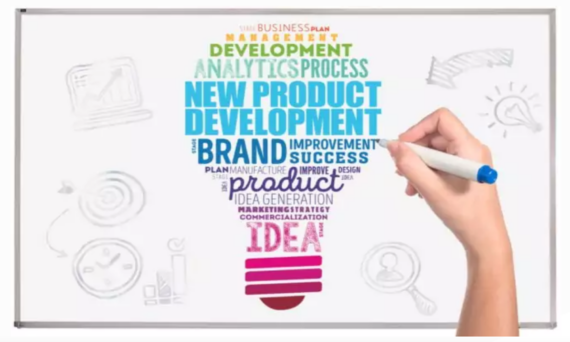Product development often doesn’t go as planned. Delays occur in over 45% of launches, and about 1-in-5 don’t reach their targets. A lot of resources must be put into product development for it to be a success.

Source: Dev.team.space
If you’re in the middle of product development, you can follow these tips to make the process a greater success:
1. Research the Market to Ensure Demand Exists
The first step in successful product development is research. It’s important to ensure that there’s a market and demand for your product before you invest time and resources into it.
Market research minimizes risks and ensures that you’re developing a product that solves real-world problems.
There are two main types of market research:
- Qualitative: Explores ideas and mindsets in great detail. This type of research has smaller sample sizes and typically makes use of focus groups and interviews.
- Quantitative: Focuses on measuring via quantifiable statistics and benchmarking. This type of research has larger sample sizes and includes telephone interviews and online surveys.
Along with market research, your development team should also establish a process for tracking and measuring your success.
2. Create a Stable Supply Chain
Once a product is complete, it must be able to be produced to satisfy demand. Competitors will enter the market with similar products, and if your supply chain isn’t running well, they will capture the market share you couldn’t accommodate.
Adidas is a prime example of losing millions of dollars due to a supply chain issue.
The company:
- Worked with an IT firm in 1993
- Planned a new warehouse management system
- The firm went bankrupt midway through
Adidas allowed another company to take over the firm’s place. The management system could not fulfill the orders properly because of key internal issues, causing Adidas to lose market share and a lot of capital in the process.
The right supply chain could have helped reduce the disruption of the IT firm leaving and allow for proper product testing before release.
If you rely on one vendor or supplier without backups in place, you risk supply chain breakdown.
3. Demo Prototypes and Refine Based on Feedback
Prototypes are crucial in product development. No one expects a prototype to be a final product, but it allows you to:
- Judge demand
- Listen to feedback
- Refine the product before release
You can also use the prototype for marketing. Show off the product on social media, send it to vendors and build demand faster with the prototype.
4. Release in Stages to Reduce Upfront Capital Expenditures
Large, worldwide releases of physical products can quickly become a bust. Consumer demand from one region or city to another can change dramatically. Releasing products in stages can help:
- Reduce upfront capital
- Allow for better product development
For example, Tesla’s self-driving technology is still being refined and released. The ability to release the product over time allowed the company to get to market, capture market share and continue to develop self-driving technology over time.
When possible, releasing the product in stages or even in certain locales via a rollout can help make product development more viable.
5. Make Adjustments as Needed
Once your product has been developed and launched, make sure that you’re maintaining feedback loops across touchpoints.
Are there issues with the product’s performance? Are some things not working as intended?
When new pain points and obstacles arise, you must be prepared to tweak and adjust the product as needed. Ensure your team has the support it needs to make these vital changes, which will be necessary for success.
If your goal is to develop a new product, use these tips to make the process a success. Taking the time to do your research and go through each stage strategically will set you up for success.
